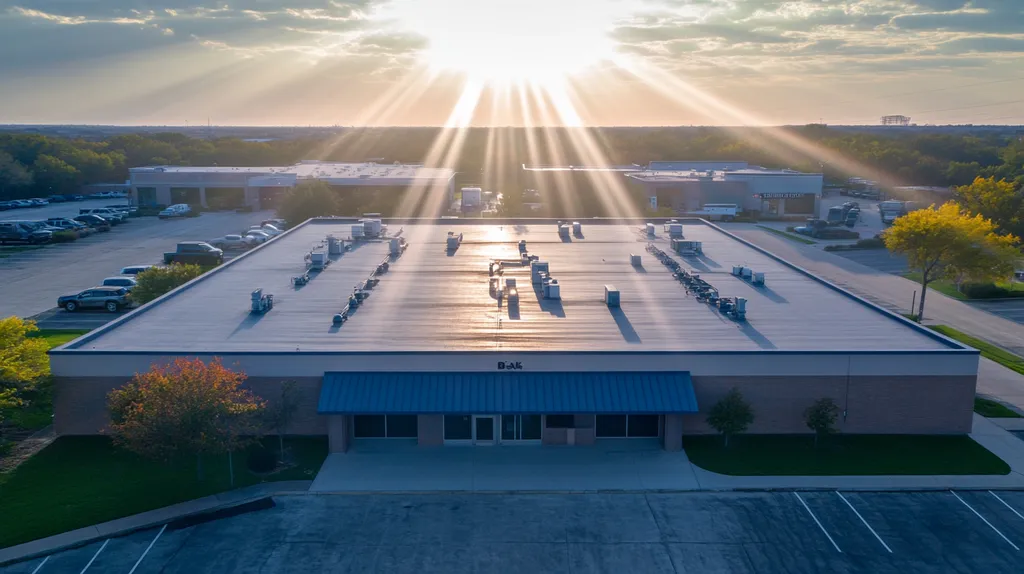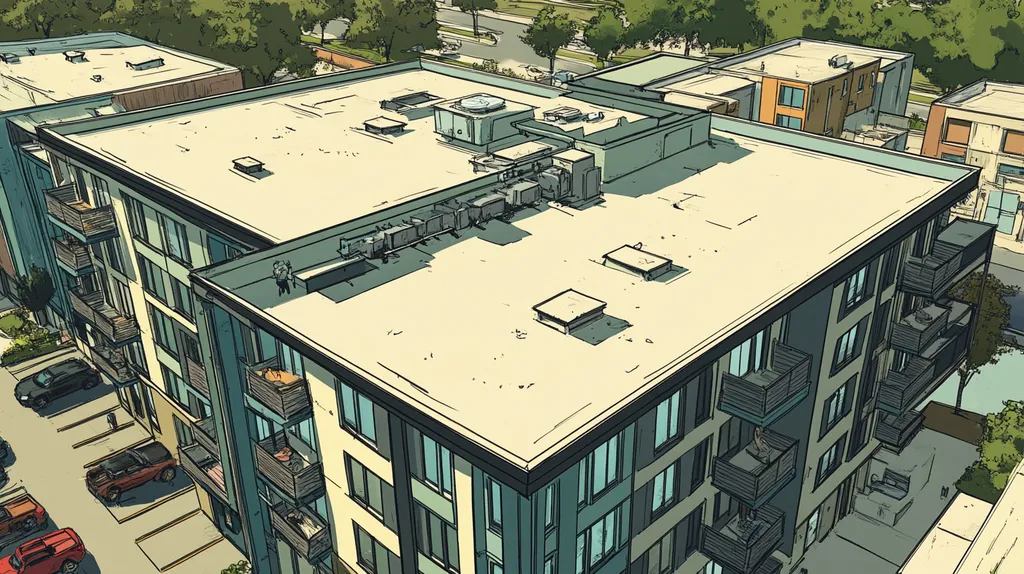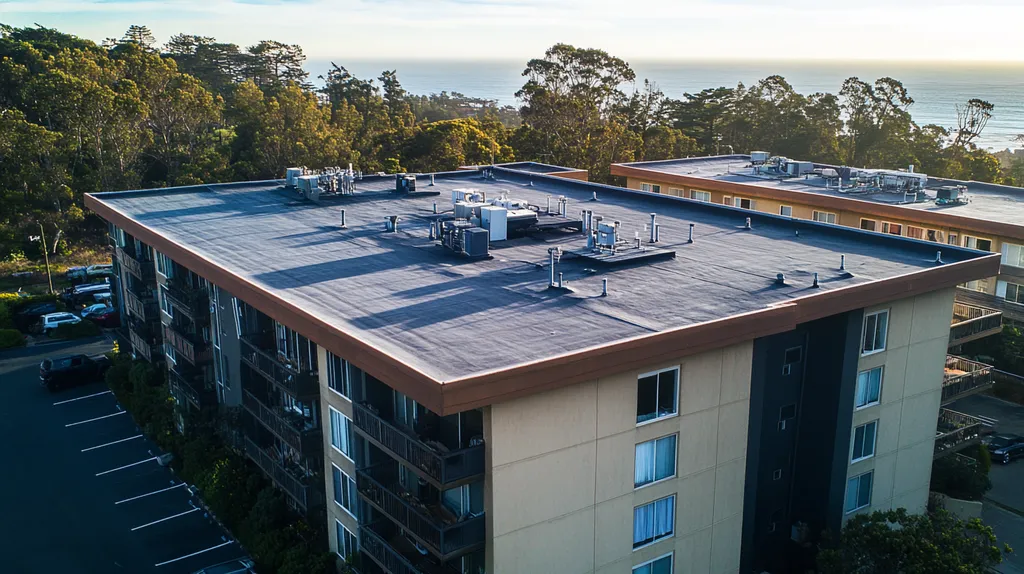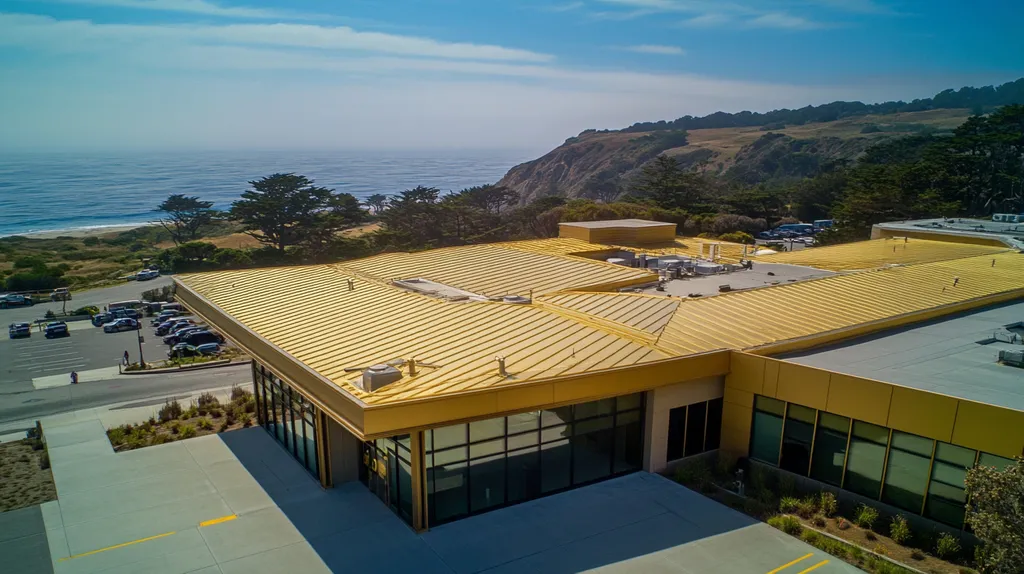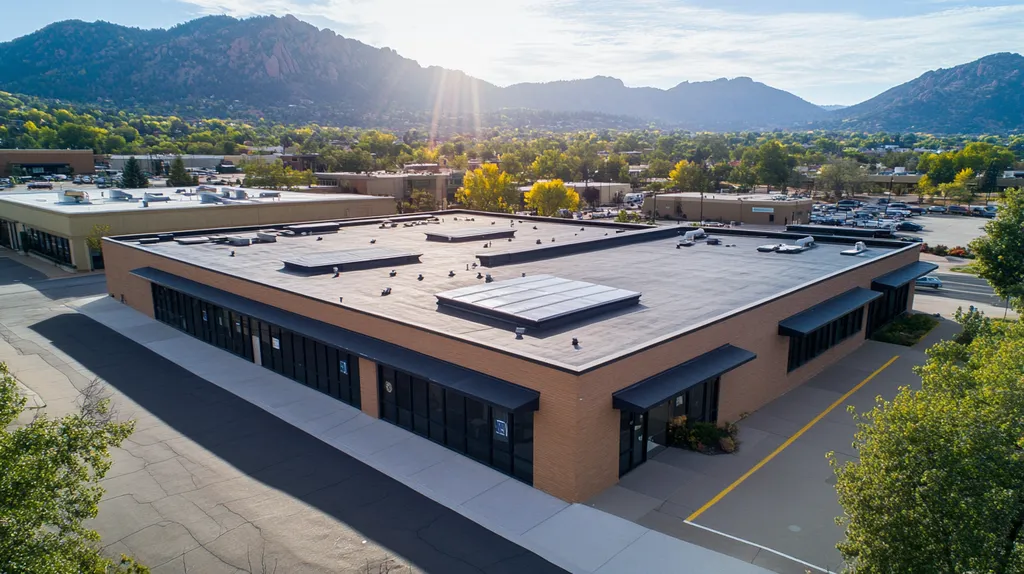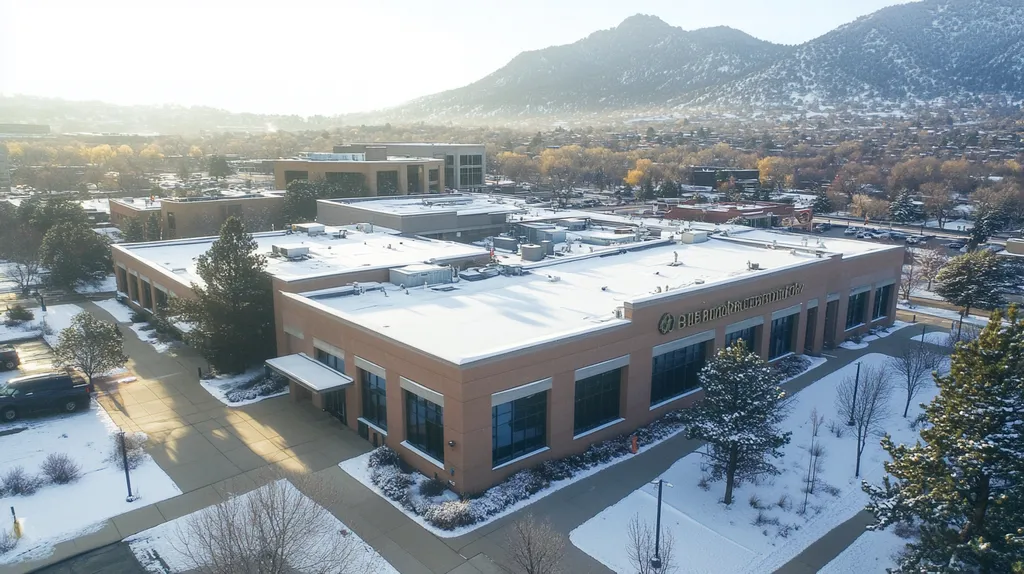Welcome to today’s Battle Royale featuring two roofing heavyweights: “Polyurethane Coatings” in the east corner versus “Silicone Coatings” in the west!
Tonight’s showdown pits these contenders against each other across six punishing rounds designed to test every aspect of their performance for Commercial Roof Coating.
At stake? Millions in potential costs, decades of building protection, and the critical performance demands of modern commercial and industrial facilities.
Our professional judging panel will evaluate each round on technical merit, real-world performance, and value delivery. After all six rounds, we’ll declare our ultimate champion.
Ladies and gentlemen, facility managers and building owners… it’s time to rumble!
ROUND 1: INITIAL COSTS & INSTALLATION
When selecting a commercial roof coating, initial costs and installation considerations can impact both immediate budgets and long-term performance. Industry data shows that proper coating selection can extend roof life by 10-15 years, while poor choices often lead to premature failure within 3-5 years. Understanding the key differences between polyurethane and silicone coatings helps facility managers make informed decisions that protect their investment.
Material Expenses
Material costs represent a significant portion of any roof coating project, typically 40-50% of the total budget. Polyurethane coatings command premium prices, often 20-30% higher than alternatives, due to their advanced chemical composition and manufacturing process.
Silicone coatings are manufactured with 100% silicone solids, providing excellent adhesion and weather resistance at a lower initial cost. These coatings rarely become brittle and demonstrate superior performance in ponding water conditions. (source: FacilitiesNet)
Despite higher upfront costs, polyurethane’s superior durability and longer service life provide better long-term value. ADVANTAGE: POLYURETHANE
Installation Complexity
Installation complexity directly affects labor costs and project success rates. Polyurethane applications require extensive surface preparation, precise temperature control, and specific humidity conditions during installation.
Multiple coats are typically necessary for polyurethane systems, with mandatory curing time between applications. This complexity demands experienced contractors and increases the risk of installation errors.
Silicone coatings offer simpler application procedures, often requiring just a single coat. Their forgiving nature during installation reduces the likelihood of application errors and minimizes contractor expertise requirements. ADVANTAGE: SILICONE
Project Timeline
Project duration significantly impacts facility operations and overall costs. Polyurethane installations typically require 3-5 days for proper curing between coats, extending the total project timeline.
Weather sensitivity further complicates polyurethane application schedules, as installation must occur within specific temperature and humidity ranges. This often results in project delays and extended facility disruption.
Silicone coatings can usually be applied in a single day, with faster curing times and greater weather tolerance during installation. This efficiency minimizes business disruption and allows faster project completion. ADVANTAGE: SILICONE
ROUND 1 WINNER: SILICONE COATINGS
ROUND 2: DURABILITY & LIFESPAN
Durability and lifespan directly impact a facility’s bottom line, with premature coating failures often leading to extensive repairs costing $5-10 per square foot. Recent market analysis shows that 40% of commercial roof replacements occur due to inadequate coating performance. Understanding the long-term performance differences between polyurethane and silicone coatings helps facility managers avoid costly failures.
Weather Resistance
Weather resistance determines how well a coating maintains its protective properties under harsh conditions. UV radiation, temperature fluctuations, and precipitation continuously test coating integrity.
Polyurethane coatings demonstrate superior UV stability and maintain their physical properties even after decades of sun exposure. Their molecular structure provides excellent resistance to thermal cycling and prevents degradation from acid rain or chemical exposure.
Silicone coatings excel at water resistance but can accumulate dirt over time, reducing their reflective properties. While they maintain flexibility, their surface can become chalky after prolonged UV exposure.
ADVANTAGE: POLYURETHANE
Physical Durability
First, the roof surface requires thorough cleaning and priming, followed by careful sealing of all seams, fasteners, and penetrations with waterproofing mastic. Multiple coating layers are then applied to achieve maximum durability and protection. (source: American WeatherStar)
Polyurethane coatings offer superior impact resistance and maintain their structural integrity under heavy foot traffic. Their high tensile strength prevents tears and punctures, making them ideal for roofs requiring frequent maintenance access.
Silicone coatings provide good elasticity but show lower resistance to physical abuse. Their softer surface can be more susceptible to damage from maintenance activities and falling debris.
ADVANTAGE: POLYURETHANE
Service Life
Expected service life significantly impacts return on investment and total ownership costs. Regular inspections and maintenance can extend coating performance, but initial material quality determines maximum lifespan.
Polyurethane coatings typically last 20-25 years with proper maintenance. Their superior adhesion and resistance to degradation result in consistent performance throughout their service life.
Silicone coatings generally provide 10-15 years of service, requiring more frequent recoating. While they maintain good flexibility, their shorter lifespan increases long-term maintenance costs.
ADVANTAGE: POLYURETHANE
ROUND 2 WINNER: POLYURETHANE COATINGS
ROUND 3: PERFORMANCE FACTORS
Performance factors determine whether a commercial roof coating will protect assets worth millions or fail prematurely, leading to costly repairs. Recent industry data shows that 35% of commercial roof coatings fail within five years due to poor performance in critical areas. Understanding how different coatings handle stress, moisture, and UV exposure helps facility managers avoid expensive mistakes.
Durability Under Stress
Commercial roofs face constant physical stress from thermal movement, equipment vibration, and maintenance traffic. These stresses can cause coating breakdown, leading to water infiltration and structural damage.
Polyurethane coatings demonstrate superior tensile strength and exceptional resistance to physical impacts. Their high abrasion resistance and ability to maintain structural integrity under heavy foot traffic make them ideal for roofs requiring frequent maintenance access.
Silicone coatings offer good flexibility but show vulnerability to physical abuse. Their softer surface can be damaged by maintenance activities and falling debris, requiring more frequent repairs and touch-ups.
ADVANTAGE: POLYURETHANE
Moisture Resistance
Silicone coatings have revolutionized moisture protection in commercial roofing, particularly in areas prone to ponding water. Their superior water resistance and high elasticity provide excellent protection against moisture-related failures. (source: FacilitiesNet)
Polyurethane coatings create a dense, impermeable barrier that effectively blocks moisture penetration. However, they can become brittle over time when exposed to constant water contact.
Silicone maintains its waterproof properties even under prolonged water exposure. Its molecular structure remains stable in wet conditions, providing consistent protection throughout its service life.
ADVANTAGE: SILICONE
UV Stability
UV radiation poses a significant threat to coating performance, potentially reducing service life by 50% in high-exposure environments. Coating degradation from UV exposure leads to premature aging and system failure.
Polyurethane coatings excel in UV resistance, maintaining their physical properties and appearance even after decades of sun exposure. Their advanced chemical composition prevents degradation and color fading.
Silicone coatings provide good initial UV protection but can become chalky over time. While they maintain flexibility, their reflective properties diminish with age, reducing energy efficiency benefits.
ADVANTAGE: POLYURETHANE
ROUND 3 WINNER: POLYURETHANE COATINGS
ROUND 4: MAINTENANCE REQUIREMENTS
Maintenance requirements can make or break a commercial roof coating’s long-term performance. Industry data shows that 65% of premature coating failures stem from inadequate maintenance practices, leading to repair costs averaging $8-12 per square foot. Understanding the maintenance demands of different coating systems helps facility managers protect their investment and avoid costly emergency repairs.
Regular Inspection Requirements
Polyurethane coatings demand thorough biannual inspections to identify surface degradation, coating separation, and potential water infiltration points. These inspections must follow strict protocols to detect early signs of failure.
Trained professionals need to examine seams, penetrations, and high-traffic areas for signs of wear or damage. The complexity of polyurethane systems requires specialized knowledge to properly assess condition and recommend repairs.
Silicone coatings typically require only annual inspections due to their superior weathering characteristics. Their simple molecular structure makes visual inspections more straightforward, allowing facility staff to identify potential issues before they become serious problems.
ADVANTAGE: SILICONE
Repair Procedures
Repairing damaged polyurethane coatings requires extensive surface preparation and precise application conditions. Temperature and humidity must be carefully controlled during repairs to ensure proper adhesion.
Multiple coating layers are often necessary to match existing thickness, with mandatory curing time between applications. This complexity increases both repair costs and facility downtime.
Silicone coatings excel in repair situations, offering excellent adhesion to existing material and typically requiring only single-coat applications. Their moisture-curing properties allow repairs even in less-than-ideal conditions, minimizing facility disruption.
ADVANTAGE: SILICONE
Recoating Requirements
Polyurethane systems typically need recoating every 7-10 years to maintain optimal performance. The recoating process demands extensive surface preparation and multiple coating applications.
The technical requirements for polyurethane recoating often result in longer facility disruptions and higher labor costs. Weather limitations can further complicate scheduling and extend project timelines.
Silicone coatings provide excellent UV and moisture resistance, extending their recoating intervals to 10-15 years. Their simpler recoating process reduces both application time and labor requirements, minimizing business interruptions.
ADVANTAGE: SILICONE
ROUND 4 WINNER: SILICONE COATINGS
ROUND 5: SUSTAINABILITY CREDENTIALS
Environmental impact now drives many commercial roofing decisions, with coating choices directly affecting building carbon footprints and energy costs. Recent data shows sustainable roofing practices can reduce building energy consumption by up to 30% and decrease material waste by 50%. Understanding how different coating options contribute to sustainability goals helps facility managers make environmentally responsible choices while maintaining performance standards.
Longevity and Waste Reduction
Coating longevity directly impacts environmental sustainability through reduced material consumption and waste generation. Extended service life means fewer replacement cycles, lower resource consumption, and reduced landfill impact.
Polyurethane coatings demonstrate superior durability with 20-25 year lifespans, minimizing replacement frequency and associated waste. Their resistance to degradation means less material enters the waste stream over time.
Silicone coatings typically require replacement every 10-15 years, generating more waste through increased replacement cycles. However, their simpler chemical composition makes them more environmentally friendly during disposal.
ADVANTAGE: POLYURETHANE
Energy Performance
Coating energy performance affects building efficiency and operating costs. High-performance coatings can reduce cooling loads by 10-15% through enhanced solar reflectivity.
Polyurethane coatings maintain their reflective properties longer, providing consistent energy savings throughout their service life. Their superior UV resistance prevents degradation of thermal performance over time.
Silicone coatings offer excellent initial reflectivity but can accumulate dirt more readily, reducing their energy-saving benefits. They excel in moisture resistance but may require more frequent cleaning to maintain optimal performance. (source: FacilitiesNet)
ADVANTAGE: POLYURETHANE
Environmental Impact
Manufacturing processes and chemical composition significantly influence environmental impact. Lower-VOC formulations and recyclable materials reduce overall ecological footprint.
Polyurethane coatings contain higher VOC levels and require more energy-intensive manufacturing processes. Their complex chemical structure makes recycling difficult, increasing end-of-life environmental impact.
Silicone coatings feature lower VOC content and simpler manufacturing requirements. Their inert nature and potential for recycling provide environmental advantages despite shorter service life.
ADVANTAGE: SILICONE
ROUND 5 RESULTS: POLYURETHANE COATINGS
ROUND 6: SPECIALIZED APPLICATIONS
In specialized commercial roofing applications, coating selection directly impacts building protection and long-term performance. Recent industry data shows that 45% of premature coating failures occur in challenging environments where standard solutions prove inadequate. Understanding how different coatings perform in specialized scenarios helps facility managers avoid costly mistakes while ensuring optimal protection for their specific needs.
Chemical and Industrial Environments
Industrial facilities present unique challenges for roof coatings, with exposure to harsh chemicals, emissions, and process byproducts. These environments demand exceptional chemical resistance and durability to maintain protective properties.
Polyurethane coatings demonstrate superior resistance to industrial chemicals and pollutants. Their cross-linked molecular structure provides excellent protection against chemical attack, making them ideal for manufacturing facilities and processing plants.
Silicone coatings show adequate chemical resistance but can degrade more quickly when exposed to certain industrial pollutants. Their softer surface can trap contaminants, potentially accelerating deterioration in harsh industrial environments.
ADVANTAGE: POLYURETHANE
High-Traffic Areas
Liquid or cold-applied roofing techniques have revolutionized maintenance access areas and equipment paths. These methods provide seamless protection without flame hazards while offering quick installation and minimal disruption to facility operations. (source: Polyglass U.S.A., Inc.)
Polyurethane coatings maintain structural integrity under repeated foot traffic and equipment movement. Their high tensile strength and abrasion resistance make them excellent choices for mechanical equipment areas and maintenance paths.
Silicone coatings can show premature wear in high-traffic zones due to their softer surface composition. While they offer good flexibility, their reduced mechanical strength limits their effectiveness in areas with frequent access requirements.
ADVANTAGE: POLYURETHANE
Climate-Specific Applications
Regional weather patterns and environmental conditions significantly influence coating performance. Extreme temperatures, humidity levels, and precipitation patterns create unique challenges for protective systems.
Polyurethane coatings perform well in varied climates but can be sensitive to moisture during application. Their thermal stability makes them suitable for environments with extreme temperature fluctuations.
Silicone coatings excel in high-moisture environments and areas prone to ponding water. Their moisture-curing properties and excellent UV resistance make them particularly effective in hot, humid climates.
ADVANTAGE: SILICONE
ROUND 6 WINNER: POLYURETHANE COATINGS
AND THE WINNER IS…
After six grueling rounds of technical evaluation, we have our verdict. With victories in four out of six rounds, POLYURETHANE COATINGS emerge as our heavyweight champion of commercial roof protection!
Polyurethane dominated the competition with knockout performances in durability, UV resistance, and specialized applications. Its superior physical strength, exceptional weather resistance, and outstanding chemical protection capabilities proved decisive in securing this historic victory.
But don’t count silicone out of the fight! This resilient contender showed impressive prowess in both maintenance and installation categories. For buildings in high-moisture environments or projects requiring rapid deployment, silicone remains a formidable challenger worthy of consideration.
IMPORTANT NOTICE: Every building faces unique challenges based on local climate, usage patterns, and structural characteristics. While this analysis provides general guidance, it cannot account for all variables that might influence coating performance in specific situations. Property owners and managers should always consult qualified roofing professionals who can evaluate their particular circumstances before making final decisions.
Ladies and gentlemen, in the high-stakes arena of commercial roof protection, remember: The true champion isn’t the coating with the most wins – it’s the one that best matches your building’s specific requirements. Choose wisely, and may your roof reign supreme!
FREQUENTLY ASKED QUESTIONS
Q. What are the initial costs of commercial roof coatings?
A. Initial costs vary; polyurethane coatings are typically 20-30% more expensive than silicone. While material expenses represent 40-50% of the budget, installation complexity can significantly influence total costs. A poor choice may lead to higher future repairs and maintenance within a few years.
Q. How do commercial roof coatings compare in durability?
A. Polyurethane coatings generally last 20-25 years, offering superior impact resistance and UV stability. Silicone coatings tend to have a shorter lifespan of 10-15 years, requiring more frequent maintenance. Understanding these differences can significantly reduce long-term costs.
Q. What performance factors should I consider for industrial roof coatings?
A. Important performance factors include durability under stress, moisture resistance, and UV stability. Polyurethane coatings excel in tensile strength and thermal cycling resistance, while silicone coatings are better in high-moisture environments. Selecting the right coating based on these factors is crucial.
Q. How often should I inspect my commercial roof coating?
A. Inspections should occur biannually for polyurethane coatings and annually for silicone. Regular inspections help identify issues like surface degradation or water infiltration early, thereby preventing costly repairs. This proactive approach is essential for maintaining the longevity of the coating.
Q. Are polyurethane coatings more sustainable than silicone coatings?
A. Polyurethane coatings typically offer longer service life, reducing waste through fewer replacements. However, silicone coatings have lower VOC content and simpler disposal, making them environmentally friendly in other aspects. Consider both longevity and environmental impact when assessing sustainability.
Q. Which coating is better for specialized applications on commercial roofs?
A. Polyurethane coatings are superior in chemical and industrial environments due to their high chemical resistance. For climate-specific applications, silicone coatings excel in high-moisture areas. Proper selection based on the specific application conditions is necessary to avoid performance failures.
Q. What should I know about recoating commercial roofs?
A. Polyurethane coatings typically require recoating every 7-10 years, involving complex surface preparation. Silicone coatings can last 10-15 years between applications, and their simpler process reduces facility disruptions. Understanding recoating needs helps in planning for maintenance budgets and operational impacts.

